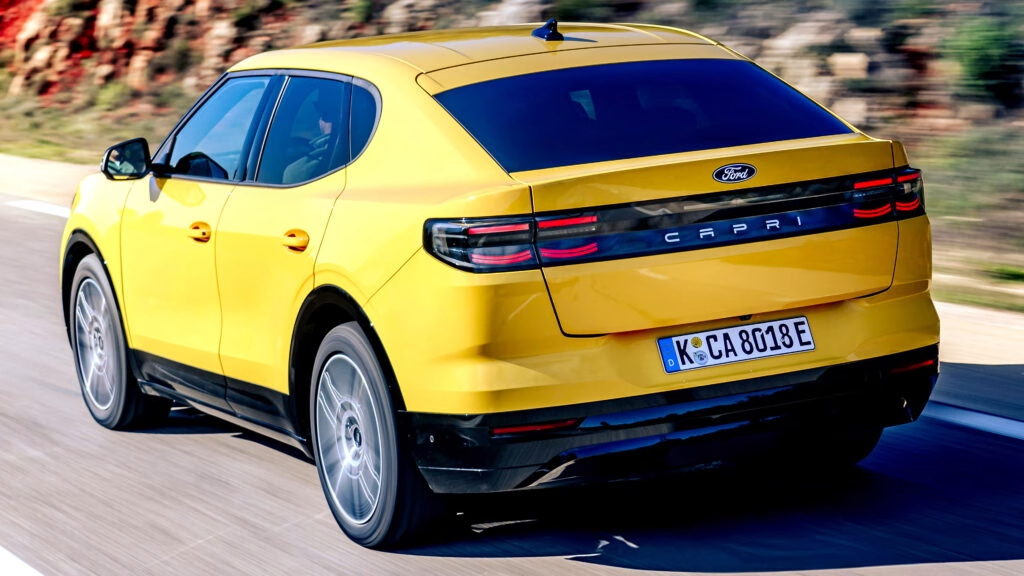Why Are Ford’s Capri and Explorer EVs Struggling in Europe?
Ford’s recent foray into Europe’s electric vehicle (EV) market hasn’t gone as planned. The Capri and Explorer EVs, both assembled at the Cologne Electric Vehicle Center in Germany, were meant to be a bold step forward. Instead, they’ve stumbled out of the gate, failing to capture the attention—or wallets—of European buyers.
What’s behind this lackluster performance? For starters, both models are essentially reworked versions of Volkswagen’s ID.4 and ID.5. While platform sharing is nothing new in the auto industry, European consumers are discerning. Many saw through the badge engineering, questioning whether Ford’s offerings brought anything truly unique to the table. The Capri, in particular, tried to revive a beloved nameplate, but nostalgia alone wasn’t enough to spark demand.
How Is Ford Responding to Weak EV Demand?
The fallout from slow sales has been swift and severe. Ford is cutting one of its production shifts in Cologne, and up to 1,000 jobs are on the chopping block. That’s about a quarter of the plant’s workforce—no small number, especially in a region where auto manufacturing jobs are a backbone of the local economy.
The company is offering buyouts and voluntary departures, but it’s clear that not everyone will land on their feet. This isn’t the first time Ford has trimmed its European workforce; just last November, the automaker announced plans to cut 4,000 jobs across the continent. For many workers, the uncertainty is becoming all too familiar.
What’s Really Holding Back EV Adoption in Europe?
Ford hasn’t been shy about pointing fingers. In statements to the press, the company cited a cocktail of challenges: EV demand that’s “significantly below industry forecasts,” shifting government regulations, and—perhaps most critically—a lack of robust charging infrastructure.
There’s truth to these claims. According to the European Automobile Manufacturers’ Association (ACEA), while EV sales in Europe grew by 14% in 2023, that pace has slowed as incentives have been slashed and public charging networks lag behind consumer needs. In Germany, for example, the government ended its main EV subsidy program in late 2023, causing a noticeable dip in new electric car registrations.
It’s not just about plugs and policies, though. Many buyers remain wary of EVs’ higher upfront costs and concerns about range, especially in rural areas where charging points are few and far between. The result? Even as automakers flood the market with new models, many shoppers are sticking with what they know.
Did Ford Misread the European Market?
There’s a lesson here about the dangers of assuming what works in one market will translate seamlessly to another. Ford’s decision to base the Capri and Explorer EVs on Volkswagen’s platforms made sense from a cost perspective, but it left the vehicles without a clear identity. In a crowded field, standing out matters more than ever.
European drivers have shown they’ll embrace EVs—just look at the runaway success of models like the Tesla Model Y or the homegrown Renault Zoe. But they want cars that fit their lifestyles, offer genuine value, and feel tailored to their needs. Ford’s approach, critics argue, felt a bit too much like a shortcut.
What Does This Mean for the Future of Ford’s EV Plans in Europe?
The ripple effects are already being felt. Ford has started to walk back its ambitious pledge to go all-electric in Europe by 2030, citing wavering demand. The company isn’t alone—several major automakers are rethinking their timelines as the reality of a slower-than-expected transition sets in.
Still, the long-term trend is clear: Europe is moving toward electrification, even if the road is bumpier than anticipated. For Ford, the challenge now is to regroup, listen to what European consumers actually want, and bring something fresh to the table. That might mean investing more in local R&D, rethinking partnerships, or even developing EVs specifically for European tastes.
What Should Workers and Consumers Watch For Next?
For the workers in Cologne, the immediate concern is job security. Ford’s reliance on buyouts and voluntary departures may soften the blow, but the underlying anxiety remains. Industry experts suggest that retraining programs and government support will be crucial in helping displaced workers transition to new roles—whether within the auto sector or beyond.
For consumers, the shakeup is a reminder to look beyond the badge and focus on what a vehicle really offers. The EV market is evolving rapidly, and today’s missteps could pave the way for tomorrow’s breakthroughs.
The big takeaway? Navigating Europe’s EV transition isn’t about perfection—it’s about smarter adjustments. Start with one change this week, and you’ll likely spot the difference by month’s end.

